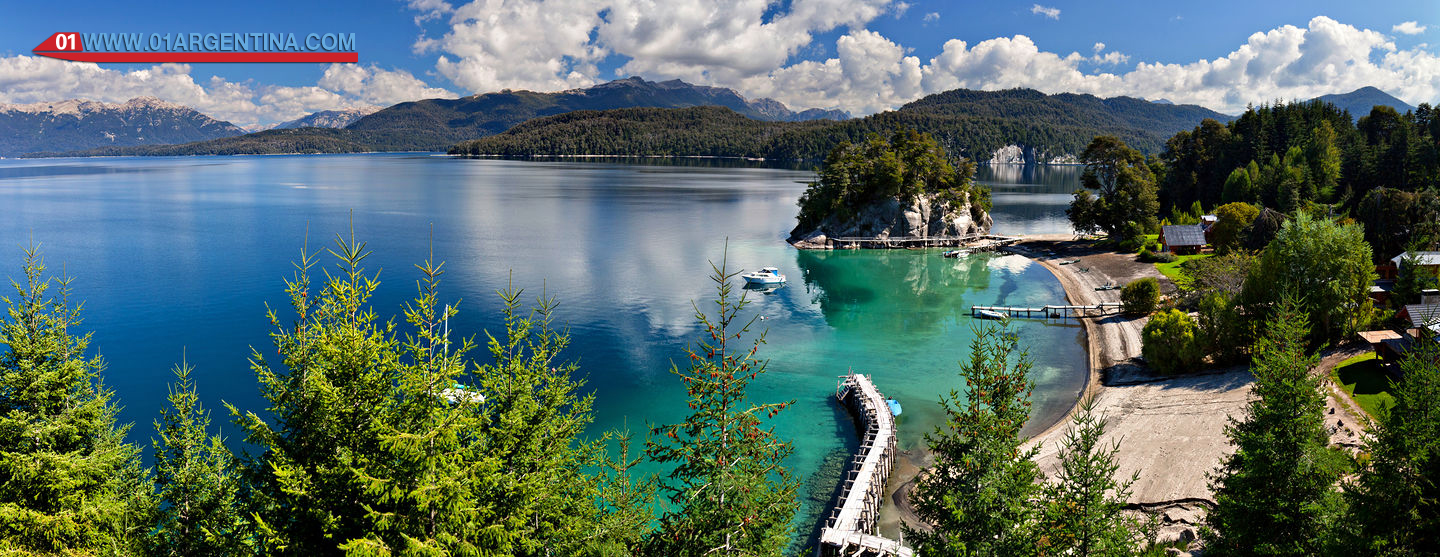
Mirrors of water fed by the thawing of the high mountains. Sources of myths and ancestral tales, attract researchers, dreamers and poets.
The largest lake basin in Argentina is in the Andean-Patagonian region. Lakes are appreciated by visitors to the national parks of the Patagonia Argentina. In them they realize traditional navigations, that combine terrestrial and lacustrine activities in excusions of half day or full day.
By land, the traditional and unforgettable circuit is the 7 Lakes, which runs through the lakes: Beautiful, Falkner, Villarino, Pichi Traful, Espejo Chico, Espejo Grande and Correntoso. In all the national parks and in the main cities of the zone there is a small and picturesque quay awaiting the departure of the boats that sail, among others, the lakes: Paimun, Epulafquen and Huechulaufquen, near Junín de los Andes; the Lácar and the Nonthué, in San Martin de los Andes; the Nahuel Huapi and Victoria Island, in Villa La Angostura and San Carlos de Bariloche; Lake Puelo, in the area of the Comarca del Paralelo 42; and the Futalaufquen Lake in the heart of Los Alerces National Park.
The lakes are the heart and essence of the landscape of the region. On the deck, the Patagonian breeze is felt. The birds approach curiously to the boat, while the green ones change color between the light of the sun and the shade. The islands that seemed distant begin to approach. It is time to descend and begin to walk the trails to see the waters from above.
Colors, shapes and details that vary with the light of the sun and the season of the year. Natural scenes ideal for photography lovers.
The region of Patagonian lakes is characterized by a unique scenic beauty in the country. The diversity offered by each national park, the uneven terrain and the presence of crystalline lakes create authentic, natural and irresistible sets for photography. The most emblematic postcards of the zone are those that are taken from the height of the Chapelco hills, in San Martín de los Andes; Campanario, in San Carlos de Bariloche; and Amigo, in El Bolson. Panoramic views that encompass mountains, lakes and the region’s most characteristic geography.
From Cerro Chapelco, in the days of clear sky, it is possible to see the imposing Lanín Volcano escorting the Andes Mountain Range. While from Mirador de Villa Pehuenia, on the conjunction of the Moquehue and Aluminé lakes, perspectives of enormous beauty are obtained, and the ascent to Batea Mahuida allows to take spectacular photographs of the whole region.
Near San Carlos de Bariloche, heading to the top of Cerro Campanario, the ascent in airlift reveals the beauty that will be appreciated from the height. The postcard is made up of Nahuel Huapi and Perito Moreno lakes, El Trébol lagoon, San Pedro and Llao Llao peninsulas, Victoria Island, Otto, Lopez, Goye, Bellavista, Cathedral and Chapel, and the swiss colony of Switzerland.
In El Bolsón, Cerro Amigo shares a beautiful view of the city, its rivers and the nearby farms. And in the nearby Lago Puelo National Park, the cameras point to the turquoise beach and its picturesque waterfront, from where you can take pictures of the surrounding hills and native forests.
In the Arrayanes National Park, the cameras point to the millenary trees whose bark shows the most curious textures. There, the birds pose before the eye of the photographer attentive to capture the essence of the place.
The locality of Esquel finds in the Old Patagonian Express La Trochita a symbol of work, a nostalgia. The steam locomotive paints the landscape, different from what can be observed in the rest of the region, deep white; merges with clouds and morning mist. It is the unmissable photo, the unforgettable memory of the legends of the train and its people. A little further south, in the Los Alerces National Park, the millenary giant specimens seem unable to be captured by the camera lens. Here, the skill of the good photographer is put into play.
The lovers of the photography will find in the Patagonia of the lakes many proposals to capture the best images. The time of day and the season of the year in which they visit the place will determine the colors of the landscape. It is possible to look for these sites independently or on photographic safaris specially organized for this purpose.








